
HarperCollins Publishers
Westerhill Road
Bishopbriggs
Glasgow
G64 2QT
Great Britain
Second Edition 2011
Reprint 12 11 10 9 8 7 6 5 4 3 2 1 0
HarperCollins Publishers 2004, 2011
EPUB Edition July 2011 ISBN 978-0-00-744473-1
Collins is a registered trademark of HarperCollins Publishers Limited
www.collinslanguage.com
A catalogue record for this book is available from the British Library
Typeset by Davidson Publishing Solutions, Glasgow
Printed in India by Gopsons Papers Ltd
Acknowledgements
We would like to thank those authors and publishers who kindly gave permission for copyright material to be used in the Collins Word Web. We would also like to thank Times Newspapers Ltd for providing valuable data.
All rights reserved under International and Pan-American Copyright Conventions. By payment of the required fees, you have been granted the non-exclusive, non-transferable right to access and read the text of this e-book on screen. No part of this text may be reproduced, transmitted, downloaded, decompiled, reverse engineered, or stored in or introduced into any information storage and retrieval system, in any form or by any means, whether electronic or mechanical, now known or hereinafter invented, without the express written permission of HarperCollins.
All rights reserved. No part of this publication may be reproduced, stored in a retrieval system or transmitted, in any form or by any means, electronic, mechanical, photocopying, recording or otherwise, without the prior permission of the publisher. This book is sold subject to the conditions that it shall not, by way of trade or otherwise, be lent, re-sold, hired out or otherwise circulated without the publishers prior consent in any form of binding or cover other than that in which it is published and without a similar condition including this condition being imposed on the subsequent purchaser.
Entered words that we have reason to believe constitute trademarks have been designated as such. However, neither the presence nor absence of such designation should be regarded as affecting the legal status of any trademark.
HarperCollins does not warrant that www.collinsdictionary.com, www.collinslanguage.com or any other website mentioned in this title will be provided uninterrupted, that any website will be error free, that defects will be corrected, or that the website or the server that makes it available are free of viruses or bugs. For full terms and conditions please refer to the site terms provided on the website.
SERIES EDITOR
Rob Scriven
MANAGING EDITOR
Galle Amiot-Cadey
EDITORIAL COORDINATION
Susanne Reichert
Rachel Smith
CONTRIBUTORS
Cordelia Lilly
Jos Mara Ruiz Vaca
Fernando Len Sols
Wendy Lee
Di Larkin
Jeremy Butterfield
We would like to give special thanks to Di Larkin, Foreign Languages Consultant, and Irene Muir, Faculty Head, Belmont House School, for all their advice on teaching practice in todays classroom. Their contributions have been invaluable in the writing of this book.

FOREWORD FOR LANGUAGE TEACHERS
The Easy Learning Spanish Grammar is designed to be used with both young and adult learners, as a group reference book to complement your course book during classes, or as a recommended text for self-study and homework/coursework.
The text specifically targets learners from ab initio to intermediate or GCSE level, and therefore its structural content and vocabulary have been matched to the relevant specifications up to and including Higher GCSE.
The approach aims to develop knowledge and understanding of grammar and to improve the ability of learners to apply it by:
- defining parts of speech at the start of each major section, with examples in English to clarify concepts
- minimizing the use of grammar terminology and providing clear explanations of terms both within the text and in the Glossary
- illustrating points with examples (and their translations) based on topics and contexts which are relevant to beginner and intermediate course content
The text helps you develop positive attitudes to grammar learning in your classes by:
- giving clear, easy-to-follow explanations
- prioritizing content according to relevant specifications for the levels
- sequencing points to reflect course content, e.g. verb tenses
- highlighting useful Tips to deal with common difficulties
- summarizing Key points at the end of sections to consolidate learning
In addition to fostering success and building a thorough foundation in Spanish grammar, the optional Grammar Extra sections will encourage and challenge your learners to further their studies to higher and advanced levels.
INTRODUCTION FOR STUDENTS
Whether you are starting to learn Spanish for the very first time, brushing up on topics you have studied in class, or revising for your GCSE exams, the Easy Learning Spanish Grammar is here to help. This easy-to-use guide takes you through all the basics you will need to speak and understand modern, everyday Spanish.
Newcomers can sometimes struggle with the technical terms they come across when they start to explore the grammar of a new language. The Easy Learning Spanish Grammar explains how to get to grips with all the parts of speech you will need to know, using simple language and cutting out jargon.
The text is divided into sections, each dealing with a particular area of grammar. Each section can be studied individually, as numerous cross-references in the text guide you to relevant points in other sections of the book for further information.
Every major section begins with an explanation of the area of grammar covered on the following pages. For quick reference, these definitions are also collected together on pages in a glossary of essential grammar terms.

What is a verb?
A verb is a doing word which describes what someone or something does, what someone or something is, or what happens to them, for example, be, sing, live.

Each grammar point in the text is followed by simple examples of real Spanish, complete with English translations, helping you understand the rules. Underlining has been used in examples throughout the text to highlight the grammatical point being explained.

 In orders and instructions telling someone to do something, the pronoun joins onto the end of the verb to form one word.
In orders and instructions telling someone to do something, the pronoun joins onto the end of the verb to form one word.
| Ayda me | Help me. |
| Acompa nos . | Come with us. |

Next page
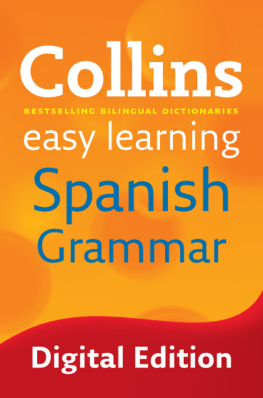
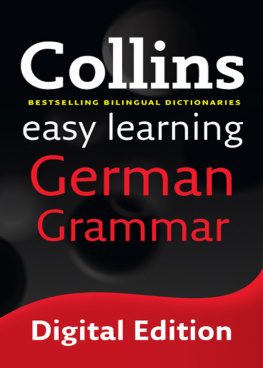


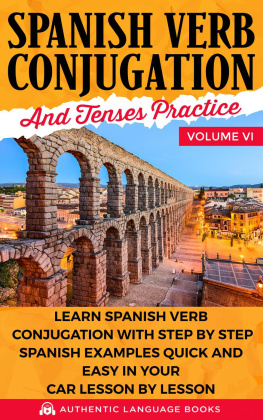
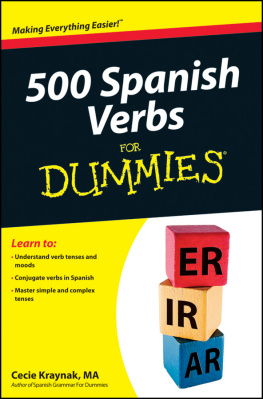
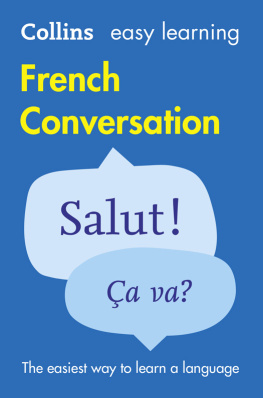
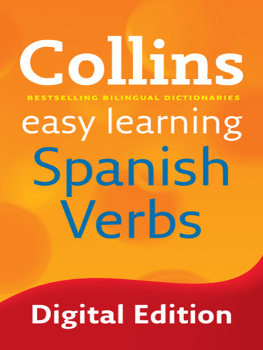
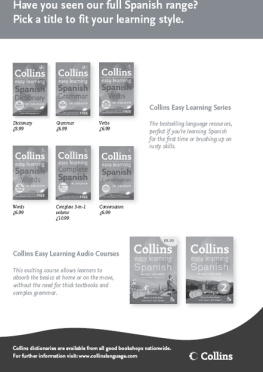
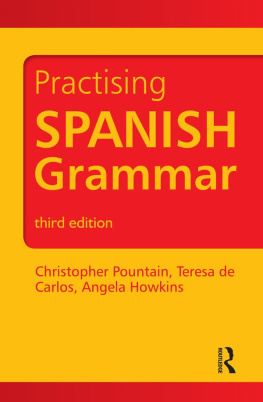

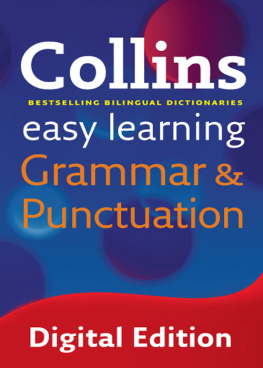
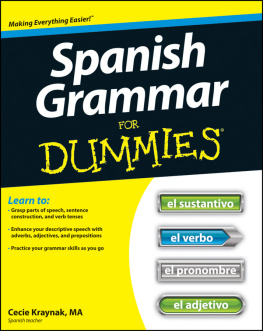



 In orders and instructions telling someone to do something, the pronoun joins onto the end of the verb to form one word.
In orders and instructions telling someone to do something, the pronoun joins onto the end of the verb to form one word.